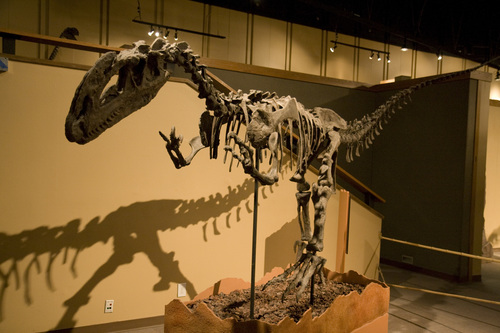
Dilophosaurus
The Dilophosaurus wetherilli, with its iconic twin head crests, prowled Jurassic riverbanks. This agile predator, reaching up to 7 meters, thrived in lush North American landscapes, exhibiting a perfect blend of speed and power that defined its reign in its prehistoric ecosystem.
399.161 kg
Weight
Length: 7.01 m; Height: 1.83 m
Size
Medium
Aggression
Characteristics
Dilophosaurus wetherilli is an early Jurassic theropod known for its distinctive twin crests on its head. It inhabited riverine environments in what is now North America. This agile predator reached lengths of about 7 meters and had a lightweight build, aiding its hunting prowess.
Distribution Range of the Dilophosaurus
Dilophosaurus wetherilli is known from fossil evidence to have lived during the Early Jurassic period, approximately 193 million years ago. The species is primarily associated with what is now the southwestern United States, specifically in regions that are part of present-day Arizona. Fossils have been discovered in the Kayenta Formation, which suggests this was a key area of its geographical distribution.
Dilophosaurus's Habitat
Environmental Conditions
During the Early Jurassic, the area that is now the southwestern United States featured a semi-arid to arid climate with seasonal variations. The environment included river systems, floodplains, and a landscape dotted with coniferous vegetation and ferns. The climate was warmer and more humid than today's desert conditions, providing a variety of ecological niches.
Ecological Niche
Dilophosaurus wetherilli was a large theropod dinosaur, likely occupying the role of a carnivorous predator. Its ecological niche would have involved hunting smaller vertebrates and possibly scavenging. The varied landscape with access to water sources and vegetation would have supported a diverse ecosystem, allowing Dilophosaurus to thrive as a dominant predator.
Copyright @ Nature Style Limited. All Rights Reserved.
 English
English